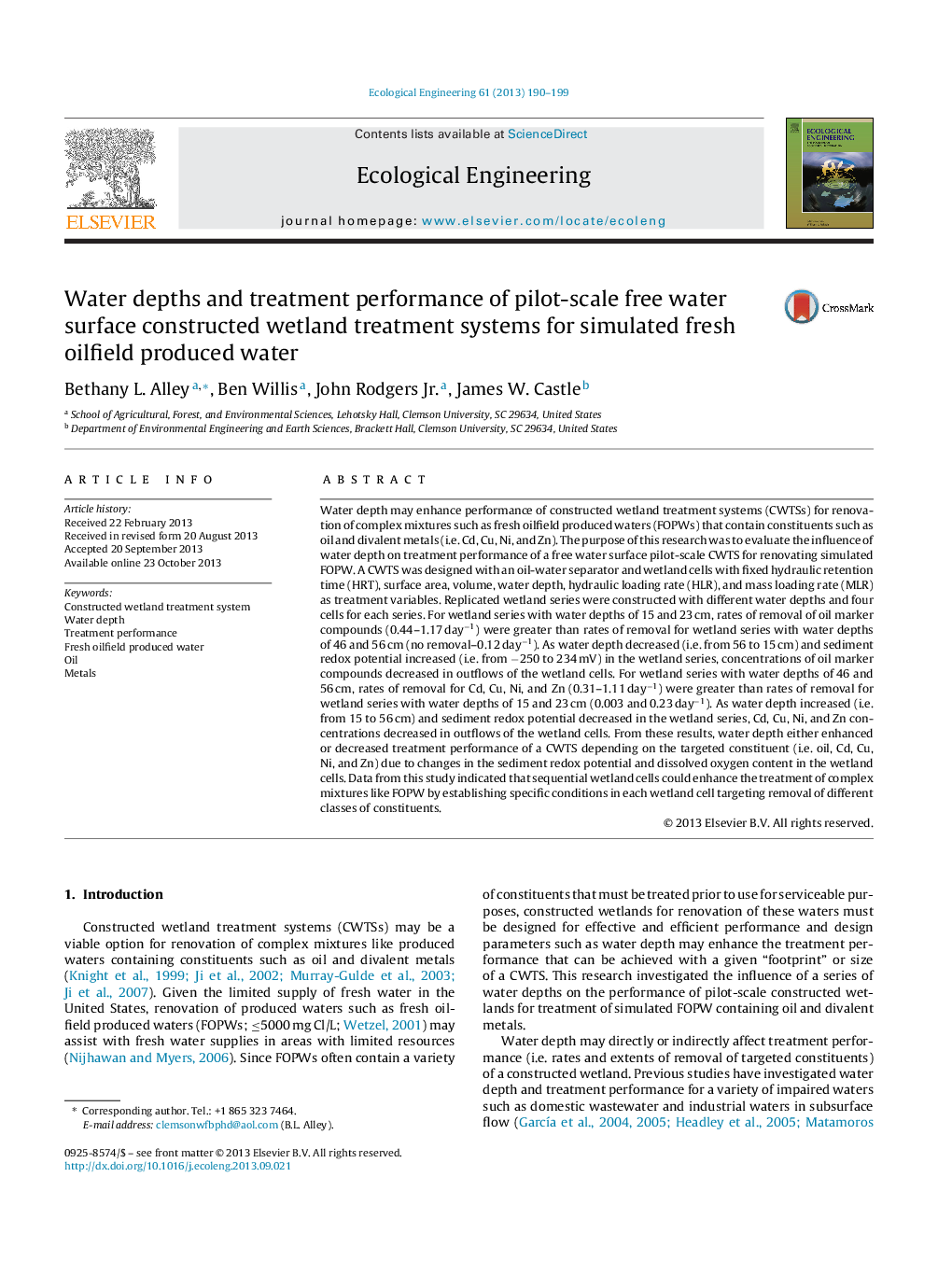| کد مقاله | کد نشریه | سال انتشار | مقاله انگلیسی | نسخه تمام متن |
|---|---|---|---|---|
| 4389479 | 1305129 | 2013 | 10 صفحه PDF | دانلود رایگان |
عنوان انگلیسی مقاله ISI
Water depths and treatment performance of pilot-scale free water surface constructed wetland treatment systems for simulated fresh oilfield produced water
دانلود مقاله + سفارش ترجمه
دانلود مقاله ISI انگلیسی
رایگان برای ایرانیان
موضوعات مرتبط
علوم زیستی و بیوفناوری
علوم کشاورزی و بیولوژیک
بوم شناسی، تکامل، رفتار و سامانه شناسی
پیش نمایش صفحه اول مقاله

چکیده انگلیسی
Water depth may enhance performance of constructed wetland treatment systems (CWTSs) for renovation of complex mixtures such as fresh oilfield produced waters (FOPWs) that contain constituents such as oil and divalent metals (i.e. Cd, Cu, Ni, and Zn). The purpose of this research was to evaluate the influence of water depth on treatment performance of a free water surface pilot-scale CWTS for renovating simulated FOPW. A CWTS was designed with an oil-water separator and wetland cells with fixed hydraulic retention time (HRT), surface area, volume, water depth, hydraulic loading rate (HLR), and mass loading rate (MLR) as treatment variables. Replicated wetland series were constructed with different water depths and four cells for each series. For wetland series with water depths of 15 and 23Â cm, rates of removal of oil marker compounds (0.44-1.17Â dayâ1) were greater than rates of removal for wetland series with water depths of 46 and 56Â cm (no removal-0.12Â dayâ1). As water depth decreased (i.e. from 56 to 15Â cm) and sediment redox potential increased (i.e. from â250 to 234Â mV) in the wetland series, concentrations of oil marker compounds decreased in outflows of the wetland cells. For wetland series with water depths of 46 and 56Â cm, rates of removal for Cd, Cu, Ni, and Zn (0.31-1.11Â dayâ1) were greater than rates of removal for wetland series with water depths of 15 and 23Â cm (0.003 and 0.23Â dayâ1). As water depth increased (i.e. from 15 to 56Â cm) and sediment redox potential decreased in the wetland series, Cd, Cu, Ni, and Zn concentrations decreased in outflows of the wetland cells. From these results, water depth either enhanced or decreased treatment performance of a CWTS depending on the targeted constituent (i.e. oil, Cd, Cu, Ni, and Zn) due to changes in the sediment redox potential and dissolved oxygen content in the wetland cells. Data from this study indicated that sequential wetland cells could enhance the treatment of complex mixtures like FOPW by establishing specific conditions in each wetland cell targeting removal of different classes of constituents.
ناشر
Database: Elsevier - ScienceDirect (ساینس دایرکت)
Journal: Ecological Engineering - Volume 61, Part A, December 2013, Pages 190-199
Journal: Ecological Engineering - Volume 61, Part A, December 2013, Pages 190-199
نویسندگان
Bethany L. Alley, Ben Willis, John Jr., James W. Castle,